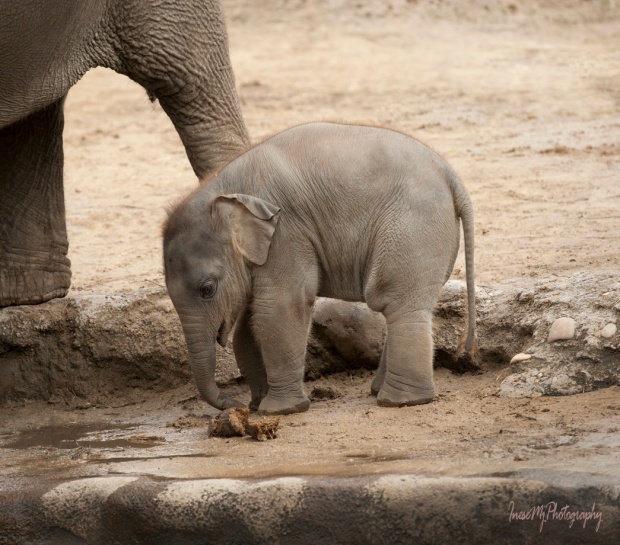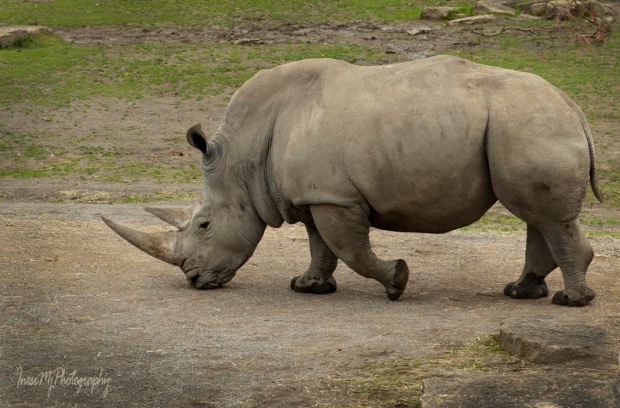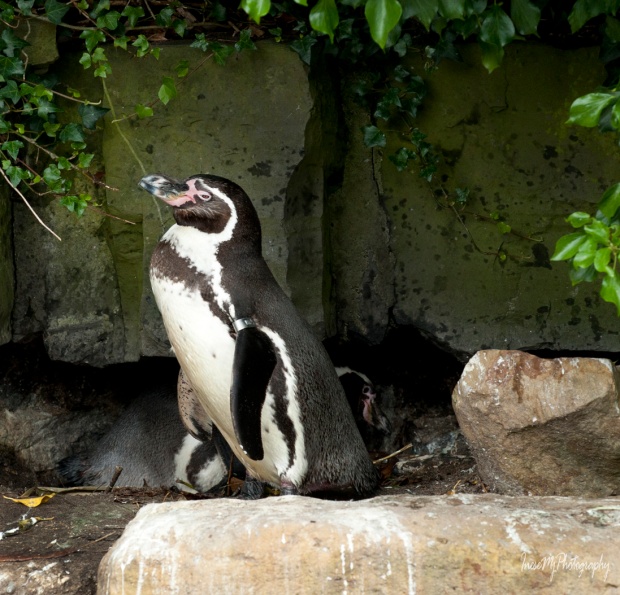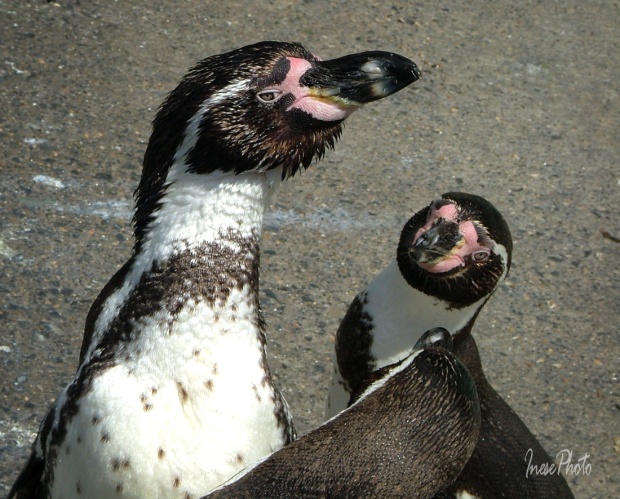Dublin Zoo was opened to the public on the 1st September 1831 with 46 mammals and 72 birds on display, all donated by London Zoo. The entry charge was sixpence that later was reduced to one penny on Sundays. It was basically a shed with the animal cages housed in a random order. The animals were routinely taunted and abused by the visitors. During the Famine of the 1840 many animals died and the institution almost collapsed. Another tough time was in the end of the 1980’s. The zoo was struggling and the council considered closing it, but with the aid of the Government it eventually started to recover. At present, Dublin Zoo is a home to some 400 animals.
I am going to the Dublin Zoo once in a decade. I have mixed feelings about the Zoos, especially about breeding in captivity. This time there were three baby elephants born within a year.
This little baby bull elephant Kabir was born to mama Yasmin in May. He is Yasmin’s fourth calf.
The other two baby elephants are Zinda born in September 2016 and Avani born in March this year, both girls.
Zinda’s mum Asha was the first Asian elephant born in Dublin Zoo back in 2007, the year of my previous visit (picture below). She was hiding behind her mother and I had a hard time taking a good picture of her.
Asha’s mum and Zinda’s grandmother Bernhardine is still alive. She is the matriarch of the herd.
Dublin Zoo’s first elephant was a female called Sita, and her keeper was James McNally. In 1903 Sita cut her foot and as James was applying ointment to her wound, she knocked him down with her trunk and stamped on his head. The coroner decided she had acted out of malice and sentenced her to death. Nearly 30 years of good behavior prior the accident didn’t help, and after two days an experienced elephant hunter and a firing squad did the killing. Even McNally’s son said that his father would not have wanted the animal killed.
Sita’s stamping foot was preserved as an umbrella bucket in the Zoo cafeteria for decades.
I didn’t have a good view of the other babies – you see Zinda in the middle and Avani on the left. They look happy, but their future is unclear.
Another set of cute babies – Tamworth piglets.
Not a baby anymore but still good looking 😉
African Red river hog, shy nocturnal animal with long tufted ears.
Just a billy goat from the Family Farm.
Bored chicken from the Family Farm.
Southern white rhino, endangered species. They have a big herd here in Dublin Zoo, and a male calf was born last August.
More than 100 animals died at Dublin Zoo during the 24 month period from 2014 to 2016, among them Southern white rhinoceros, two Rothschild giraffes, three grey wolves and a red panda.
Rothschild giraffes in 2007. They are no more.
Red panda in 2007. Gone.
Humboldt penguins are very quiet. Ten years ago there were more of them, and I remember the sounds they made – trumpet-like, even elephant-like.
This picture is 10 years old. Three Humboldt penguins died in 2015. There are fewer than 12000 of the penguins left in the wild..
Penguins and zebras look good in monochrome pictures.
I love these neat animals.
Another black & white favorite – European magpies. They are living in the zoo along with many other wild birds including a Grey heron. I saw him in 2007 and he is still alive, still hanging with penguins and probably stealing their fish 🙂
Here are some links you might be interested in:
National Animal Rights Association, Ireland
Captive Animals’ Protection Society (CAPS)
Thank you for visiting Dublin Zoo with me. One more post next Saturday.
 Have a wonderful weekend!
Have a wonderful weekend!






















Like many of the commenters here, I do not like zoos. They are outdated and horrid places for animals. I believe animals are on earth for their own purposes not ours. Man has exploited them to death, literally. Many excuses are made as to why they still exist, I don’t believe any of them are good excuses. Rescuing and rehabilitating animals is a much better system. I pray for a better world for all animals. Your photo’s are wonderful.
A great post again. 🙂 Thank you. Now, why did 100 animals die in 2 years? Any reason?
(And on another – sad – note: a white rhino was recently killed at a wildlife park in France. To steal its horn) 😦
Yes, I have read about the rhino 😦 I hate those who use the illegal products and encourage the killings.
Utterly ridiculous. A rhino horn is no more than an outgrown nail… (Traditional chinese medicine, my… foot!)
Ignorant barbarians.
A growing crowd…
😦
So many of us have mixed feelings about zoos, Inese. Some claim to be breeding very endangered species, which can be later released into the wild. Jersey Zoo (on the island of Jersey, established by Gerald Durrell) is one of those. We visited there in 1998. I don’t know how it’s faring nowadays, so I’ll have to look that up, but it did claim success with several species in the 90s.
The mortality rates you quote for Dublin Zoo are disturbing and I imagine they may be similar to other zoos. All early zoos were horrendous places, purely for the entertainment of people without a care for the animals there. However good a zoo is nowadays, I still feel those animals would be far better off in their natural habitats – unless the zoo is attempting to prevent extinction of the species.
There are always so many feelings roused over this issue. Thank you for the thought-provoking post and gorgeous photos, Inese. I’ll read Part II asap.
I have mixed feelings about zoos too. We live not too far from Safari West where the animals roam free. It’s expensive to visit but definitely worth it. Love those elephants.
Thank you! I think elephant is one of the most zoo-tolerant animals. If there is food, elephant will stay close and feel happy 🙂 What worries me is that they breed elephants to attract visitors, but how many elephants one can afford to keep? Where the rest will go? There were rumors that some of them go to the animal circuses 😦
Opened in 1831…..This is probably one of the oldest zoos there are, cute baby “little” elephant
Thank you Charly. Yes, it is the third one in Europe, just a couple of months younger than the London Zoo. Elephants have always been the zoo favorites, and the babies look so very sweet.
That death rate seems high to me, Inese. A sad post, but beautiful elephant babies. Hopefully zoos will continue to improve as we learn how to treat animals better in the wild and in captivity. ❤
These animals have safety and some quality in their lives. Not all animals belong in zoos but by displaying wildlife, people who may never ba able to see coral reefs, islands with sea turtles, nor lions with their mates and young living together may never know how important it is to use good ecological choices, preserving nature isn’t one learned from books but from actually seeing living examples. I understand some may feel these animals suffer and feel constrained. Conservation and donations are needed for this world to keep on going. . .
Sorry, Inese, I support humane treatment and believe most zoos do care and try to help. 🕊
Soon, I want to share my giraffe photos from the Columbus Zoo, while my grandies hold lettuce leaves and giraffes come up and gobble them up!
We have acres in an area which are called “the Wilds” down south of Columbus, Ohio. Some of the giraffes come to live in our safari area of our Columbus Zoo. They run, gallop and seem so happy and free. I hope someday that I will share my pictures in the (boring) winter. xo 💐 Smiles, Robin
Robin, I don’t argue, some zoos are good. Dublin Zoo had death rate 11% in 2015 – do you think it is normal? Almost 160 animals died in Fota Island in 2015. I wrote about Fota, genuinely though it was a great place. Now I only have photographs, the animals are gone. It is all wrong, it shouldn’t be like that.
I do feel concern and noticed you included the 11% statistics, Inese. I think that WWF might like to check into this.
I definitely see you as an advocate and hope someone who knows how to get them involved may read your fine posts. Your photography and heartfelt words mean a lot to me and others.
The World Wildlife Foundation says they look into conservation of wildlife and endangered species. They wish for harmony between nature and mankind. Just a possible lead. . .
I love your photos of the animals and birds. I am also on the fence when it comes to zoos, I don’t like seeing the animals in small spaces but if the zoo is a good one and they make sure the animals are well cared for, it could mean the species still exists when there are few/none left in the wild. Not ideal. Some zoos do it much better than others. Love Gill xxxxx
Thank you! 🙂 Yes, it is exactly the point – some zoos do it better, some worse. xxxxxx
Beautiful pictures. I had a great virtual tour 🤗
Thank you Calysta!
gorgeous pictures, Inese – I now need to go to my local zoo in Montpellier!!! Thank you!! 🙂
Thank you! 🙂
I have some misgivings about Zoos, too. However, I really love going to the Toronto Zoo. So I have decided to take the philosophy that Zoos help people to care about the animals and by extension their natural habitats in the native lands.
Thank you for your comment! I would say – everything depends on the living conditions. If animals get sick and feel stressed out in their enclosures, I am not a supporter of such zoo. If animals have been rescued from circuses or traffickers and housed in a happier environment, then it sounds like a right thing to me.
Beautiful pictures, as always, Inese! Those elephant babys are so very lovely! I could watch them playing and fooling around all day. 😄 The BBC has made some wonderful documentaries about them in the wild. Since we’ve already talked about these mixed feelings when I posted about the Berlin Zoo, I won’t repeat it here now. But I was quite shocked reading about the Dublin Zoo’s difficulties in the past and present. The loss of so many in such a short time in the last years let’s an epidemic come mind… But the surviving ones look very healthy and well cared for. 😄
Thank you for taking us to the Zoo this time! It’s wonderful how many things I’ve learned about your corner of the world through you and your beautiful posts and pictures! 😄 xxxxxxxxxx
Thank you so much, Sarah! I cannot tell exactly what had happened, but something was definitely wrong since the mortality rate was at about 11-12% these years. I hope they improved their veterinary care. In my second blog I will write about more cases… As I see it, something isn’t quite right with their vet department. xxxxxxxxxxxxx
What lovely captures of motion! There’s life in the eyes of every creature here, though I see a bit of sadness in the penguins.
Thank you Jean! May all the creatures be happy. xxxxx
Lovely pictures, they put smile on my face!
Thank you Inese.
Love the photos but I also have mixed feelings about zoos. I remember reading a book about the popular menageries and what a show it used to be to bring wild animals to Europe centuries ago. (I love the farms one can visit with kids and not so kids…) 🙂
Thank you Olga! I wouldn’t mind the zoos if I knew that animals were happy there. Not all the animals can live in captivity and stay sane. You are so right mentioning the farms. These animals are domesticated and food is the main factor. I could say the same about elephants, but I hate to see cheetah or tigers locked in their cages. It is so very sad.
Your photos are glorious! 🙂 🙂 It’s another difficult issue, isn’t it? Life seems full of them sometimes. Most of the zoos do great conservation work but it doesn’t seem right to see these lovely creatures in captivity.
Thank you for your comment! During my visit I had notice some alarming factors – heavy commercialization; absence of some animals who were there before; enclosures overgrown with unkempt bushes. When I returned home I started doing my research and found more facts. Most of animals can live in captivity just fine. Everything depends on the living conditions and care, and it is where the problems lie.
A lovely post, Inese. I understand and relate to your mixed feelings. Regardless the animals are beautiful and your photos magnificently done. Hugs.
Thank you so much for stopping by, Teagan. Have a lovely week!